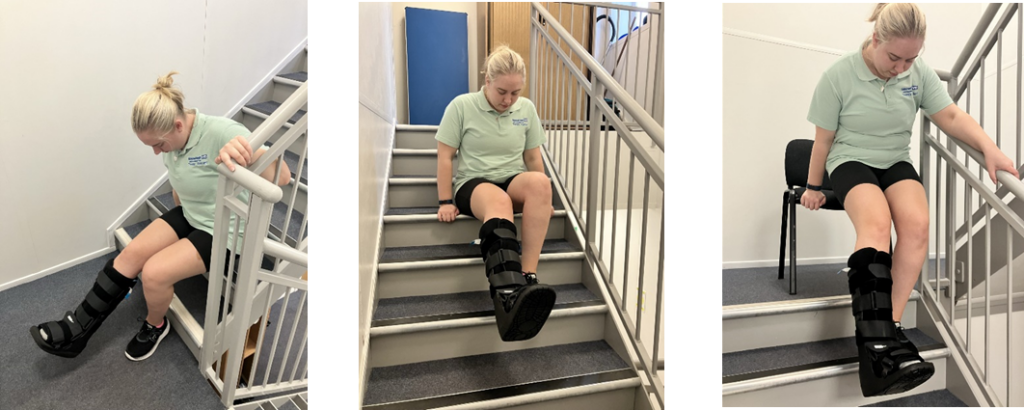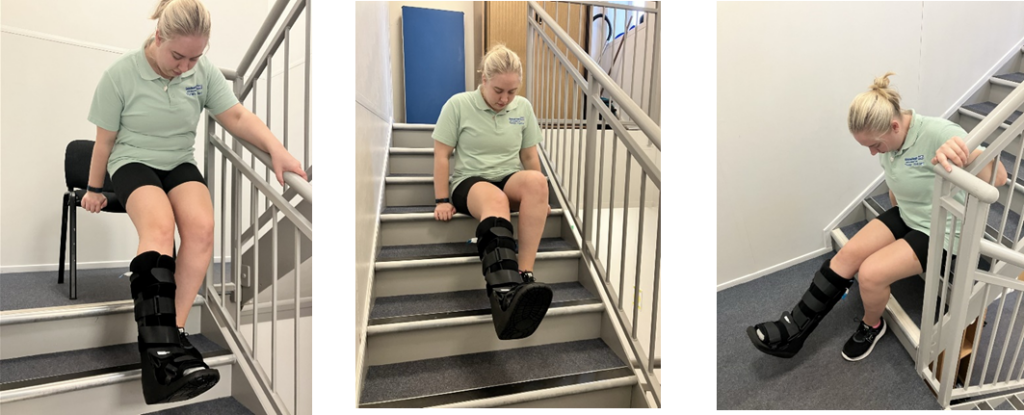Non – weight bearing means no weight can be put through the operated leg, this is put in place for a certain amount of time as instructed by the surgeon and allows the injured limb to heal.
- It is helpful to keep the limb elevated to help with swelling unless instructed otherwise
- These exercises should not make your pain worse, do within the limits of comfort
- Exercising the NWB leg helps strengthen the limb and aids the recovery process
Static quadriceps
Sit upright on your bed or the floor, with your legs out straight in front of you. Point your toes directly up to the ceiling. Tighten your thigh muscle, pushing the back of your knee down into the floor. You should be able to see the muscle tensing. Relax and repeat.
10 reps 3 sets 10 sec hold

Straight leg raise
Sit with your resting leg bent and pull your toes up towards you. Tighten your thigh muscle, pressing the back of your knee into the floor. Keeping your knee locked straight, lift your leg off the floor. Hold this position before you return your leg to the floor. Make sure your hips remain in contact with the floor at all times, and your knee remains straight.
10 reps 3 sets 5 sec hold

Glute Squeeze
Lie on your back with your legs straight. Clench your buttocks together and hold this position. Relax and then repeat.
10 reps 3 sets 10 sec hold

Knee extensions in sitting
Start in a seated position with your legs stretched out. Stretch out your affected knee as far as possible. Hold, and then return to the starting position.
10 reps 3 sets

Going up the stairs on your bottom

- Position yourself in front of the stairs so they are behind you
- Hold the handrail with one hand and reach down for the stairs with the other
- Lower your bottom down to the stairs
- Keep your affected leg off the floor while you do this
- Place both hands on the step above
- Push through your unaffected leg and hands to raise yourself up the stairs one at a time.
- Once you reach the top of the stairs, we recommend you raise yourself up onto a stool or chair before standing up.
- For safety reasons the stool/chair must be sturdy and positioned slightly away from the stairs. Once sat on the chair, swing your legs around to stand up to your walking aid.
Going down the stairs on your bottom

- Going down is the reverse process.
- Sit on your stool/chair that is positioned at the top of the stairs. For safety reasons the stool/chair must be sturdy and positioned slightly away from the stairs.
- Use the handrail to carefully lower yourself onto the top step
- Slowly lower yourself down each step on at a time and continuing to not to place weight through your affect leg.
- Once you are 2-3 steps away from the bottom of the stairs, reach with one hand for the rail and the second hand on the step to push up into a standing position.